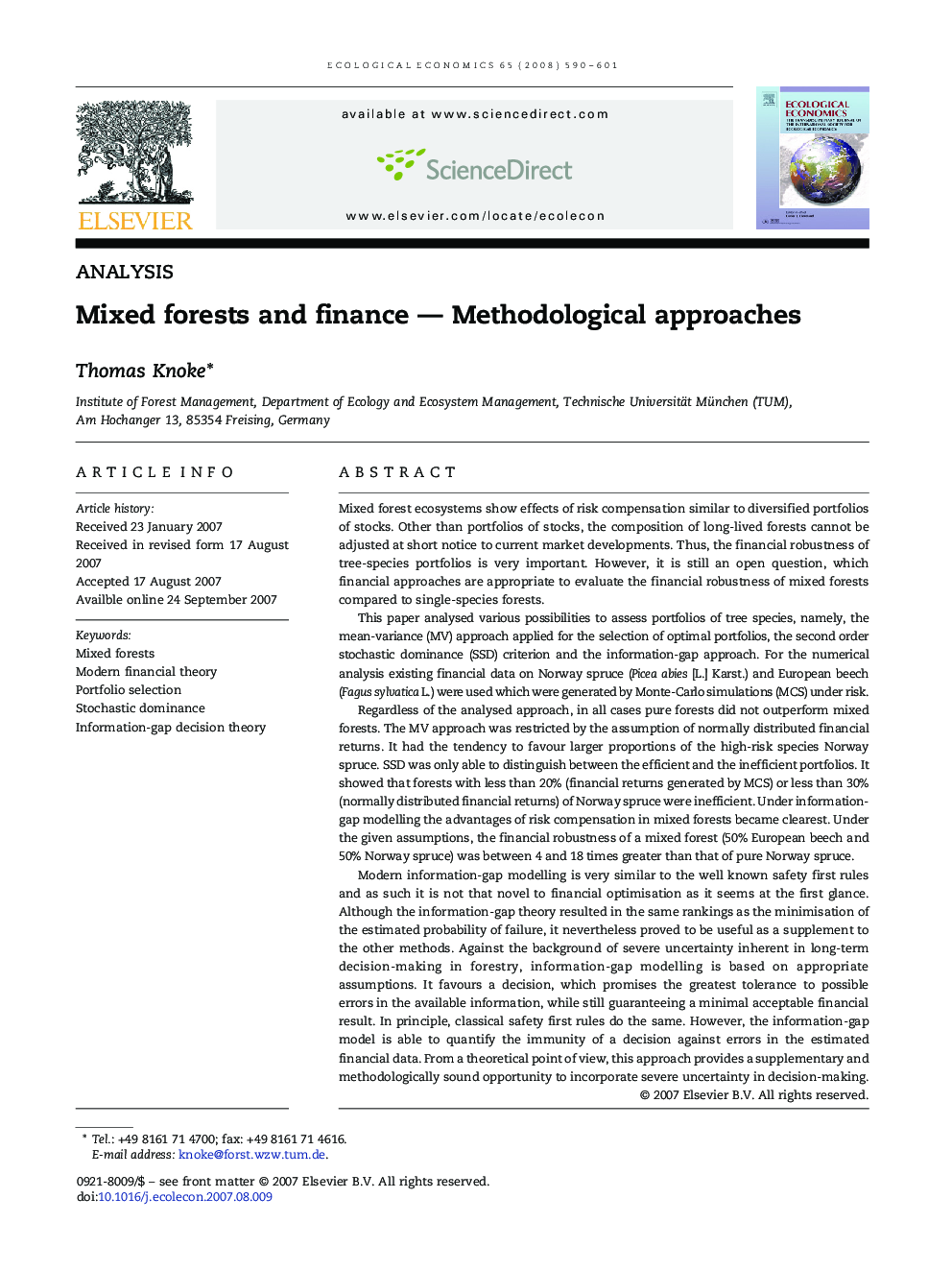| کد مقاله | کد نشریه | سال انتشار | مقاله انگلیسی | نسخه تمام متن |
|---|---|---|---|---|
| 5051493 | 1371126 | 2008 | 12 صفحه PDF | دانلود رایگان |

Mixed forest ecosystems show effects of risk compensation similar to diversified portfolios of stocks. Other than portfolios of stocks, the composition of long-lived forests cannot be adjusted at short notice to current market developments. Thus, the financial robustness of tree-species portfolios is very important. However, it is still an open question, which financial approaches are appropriate to evaluate the financial robustness of mixed forests compared to single-species forests.This paper analysed various possibilities to assess portfolios of tree species, namely, the mean-variance (MV) approach applied for the selection of optimal portfolios, the second order stochastic dominance (SSD) criterion and the information-gap approach. For the numerical analysis existing financial data on Norway spruce (Picea abies [L.] Karst.) and European beech (Fagus sylvatica L.) were used which were generated by Monte-Carlo simulations (MCS) under risk.Regardless of the analysed approach, in all cases pure forests did not outperform mixed forests. The MV approach was restricted by the assumption of normally distributed financial returns. It had the tendency to favour larger proportions of the high-risk species Norway spruce. SSD was only able to distinguish between the efficient and the inefficient portfolios. It showed that forests with less than 20% (financial returns generated by MCS) or less than 30% (normally distributed financial returns) of Norway spruce were inefficient. Under information-gap modelling the advantages of risk compensation in mixed forests became clearest. Under the given assumptions, the financial robustness of a mixed forest (50% European beech and 50% Norway spruce) was between 4 and 18 times greater than that of pure Norway spruce.Modern information-gap modelling is very similar to the well known safety first rules and as such it is not that novel to financial optimisation as it seems at the first glance. Although the information-gap theory resulted in the same rankings as the minimisation of the estimated probability of failure, it nevertheless proved to be useful as a supplement to the other methods. Against the background of severe uncertainty inherent in long-term decision-making in forestry, information-gap modelling is based on appropriate assumptions. It favours a decision, which promises the greatest tolerance to possible errors in the available information, while still guaranteeing a minimal acceptable financial result. In principle, classical safety first rules do the same. However, the information-gap model is able to quantify the immunity of a decision against errors in the estimated financial data. From a theoretical point of view, this approach provides a supplementary and methodologically sound opportunity to incorporate severe uncertainty in decision-making.
Journal: Ecological Economics - Volume 65, Issue 3, 15 April 2008, Pages 590-601